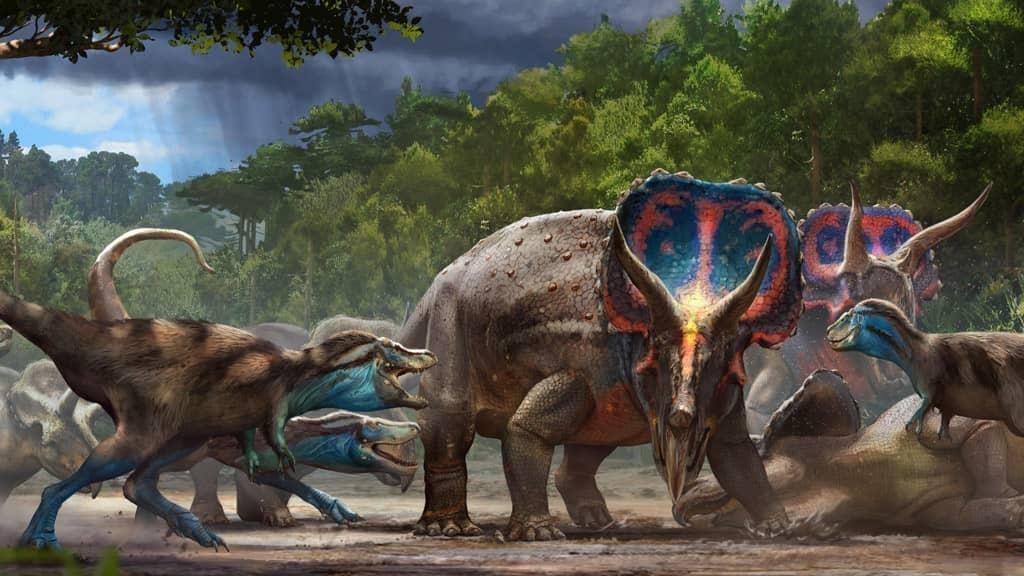Fossils from Dinosaur Mystery Duel Coming to Raleigh Museum


Get ready to be intrigued by a Cretaceous cold case, a mystery 67 million years in the making.
The evidence shows that, way back then, a very young Tyrannosaurus rex and a Triceratops were battling it out.
The area where they dueled would eventually become a hillside in Hells Creek, Montana.
It apparently was a duel to the death. Both creatures perished. Their remains were buried together in sediment. Their fossils became intertwined in what looks like a final death match.
In fact, the fossil discovery became known as “dueling dinosaurs.”
Now the public will get to see the magnificent fossils of the world’s most popular dinosaurs in a first-of-its-kind exhibit.
The nonprofit organization Friends of the North Carolina Museum of Natural Sciences announced that it acquired the fossilized animals with private funds. The skeletons will be gifted to the Raleigh museum’s vertebrate paleontology collection.
“The Museum is thrilled to have the unique opportunity to house and research one of the most important paleontological discoveries of our time,” said Dr. Eric Dorfman, Director and CEO of the North Carolina Museum of Natural Sciences. “Not only are we able to uncover unknown details of these animals’ anatomy and behavior, but our new dedicated facility and educational programs will allow us to engage with audiences locally, across North Carolina, and worldwide.”
The exhibit will open in the fall of 2022, in a new space on the ground floor of the Nature Research Center. Scientists will study the specimens in front of the public and visitors will be able talk directly to researchers.
“We have not yet studied this specimen; it is a scientific frontier. The preservation is phenomenal, and we plan to use every technological innovation available to reveal new information on the biology of T.rex and Triceratops. This fossil will forever change our view of the world’s two favorite dinosaurs,” said Dr. Lindsay Zanno, head of paleontology at the North Carolina Museum of Natural Sciences and associate research professor at North Carolina State University. “The way we are designing the exhibit, inviting the public to follow the research, will set a new standard for museums.”
Paleontologists discovered the remains about 10 years ago. Zanno and the museum staff got involved when the fossils were spotted in a warehouse in Long Island where they were to be auctioned. However, the fossils were never sold.
“It is an immeasurable honor to welcome these specimens as they take up permanent residence here at the Museum,” said Jason Barron, chair of the Friends of the North Carolina Museum of Natural Sciences. “Dueling Dinosaurs is a singular find; we are incredibly grateful to our supporters for making this a reality and allowing our visitors – in-person and virtual alike – to experience this journey with us.”
What makes the specimens even more intriguing is that fossils have never really been studied. The fossils include the best-preserved skeletons of Triceratops and T. rex unearthed to date — including the only 100% complete skeleton of T. rex yet discovered. They appear locked in a potential predator-prey encounter.

They remain encased within sediment from the Montana hillside where they were discovered. Because of these rare burial conditions, each bone is in its natural position and Museum scientists will have access to biological data that is typically lost in the excavation and preparation process.
Preliminary study shows such features as body outlines, skin impressions and other soft tissues, as well as injuries and potential evidence of interaction, such as tyrannosaur teeth embedded in the Triceratops body, are all preserved.
"These specimens are pristine," adds Zanno. "Every bone is in its natural position as it was when the animal died."